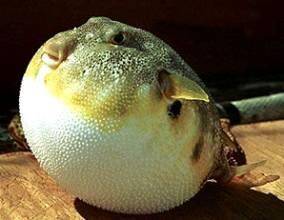The frilled shark (Chlamydoselachus anguineus) is a unique and intriguing species that captures the imagination of marine enthusiasts and scientists alike. Known for its ancient lineage and distinct appearance, this deep-sea predator is often referred to as a "living fossil." In this article, we’ll explore the frilled shark’s habitat, physical characteristics, diet, reproduction, and conservation status.

Frilled sharks are typically found in deep waters, often at depths of 200 to 1,500 feet (60 to 460 meters). They prefer continental slopes and deep oceanic regions, where they can easily hunt for prey. Their range extends across the Atlantic and Pacific Oceans, with sightings reported near Japan, New Zealand, and the eastern coast of the United States.

One of the most striking features of the frilled shark is its elongated, eel-like body, which can grow up to 6.5 feet (2 meters) in length. The shark gets its name from the unique frilled appearance of its gills, which are made up of several fleshy flaps. These gills give the shark a distinctive look that sets it apart from other shark species.
Frilled sharks have a mouth filled with 300 needle-like teeth arranged in 25 rows. This specialized dental structure allows them to grasp slippery prey like squid and small fish effectively. Their dark, brownish-gray coloration helps them blend into the deep-sea environment, providing camouflage against predators and prey alike.
As carnivorous predators, frilled sharks primarily feed on squid, fish, and other small marine creatures. They are known for their unique hunting technique: they can bend their bodies into a U-shape, allowing them to ambush prey from various angles. With their sharp teeth, they can quickly grab and consume their catch, often swallowing prey whole.

Frilled sharks have a fascinating reproductive process. They are ovoviviparous, meaning that the eggs develop inside the female's body, and the young are born live. After a gestation period of approximately 3.5 years, the female gives birth to about 2 to 15 pups, each measuring around 12 to 14 inches (30 to 35 cm) in length. This long gestation period is one of the longest in the animal kingdom, which can impact population recovery rates.
Currently, frilled sharks are not considered endangered, but they face threats from deep-sea fishing practices, habitat destruction, and climate change. As bycatch in commercial fisheries, they are often unintentionally caught and discarded. Protecting their deep-sea habitats is crucial for their survival, and ongoing research is necessary to understand their populations better.

The frilled shark is a remarkable example of how diverse and resilient life can be in the ocean’s depths. With its unique physical traits and fascinating behaviors, it offers insight into the evolutionary history of sharks. As we continue to explore and study these mysterious creatures, it’s essential to prioritize their conservation to ensure they remain a part of our planet’s rich marine biodiversity. Whether you’re a marine enthusiast or just learning about ocean life, the frilled shark is a captivating species worth knowing more about!
Related
Similar Animals

Flounder is a general term for fishes of the order Plaice. It has no swim bladder and feeds on worms, crustaceans and other animals. Taxonomically it belongs to the class Actinopterygii, Pleuronichthys. The flatfish has a flat body with eyes that grow on only one side of the body, a unique asymmetri...

Pufferfish (scientific name Tetraodontidae) is also known as pufferfish or puffers in foreign languages. Because of its "pig-like" appearance and its frequent activities in river estuaries, it is commonly known as pufferfish in Jiangsu and Zhejiang, while it is called Dingba in Shandong, L...

The scientific name of cod is Eleginus gracilis. It is a kind of deep-sea fish and one of the economic edible fish. There are 9 species, namely: silver cod, Pacific cod, Atlantic cod, haddock, blue cod, green cod, haddock, Norwegian cod, and pollock.Cod is a cold-water fish in the middle and lower l...

The Latin name of the blobfish is Psychrolutes marcidus, and its foreign name is Blobfish. It is also known as the sad fish, soft hidden sculpin fish, and popper fish. Because it has a sad face, it is called the "sadest expression fish in the world".In order to protect endangered ugly anim...

The scientific name of the vampire fish is "Danionella dracula", a small carp found in Myanmar. It is estimated that it has been bred on Earth for nearly 100 million years. Because of its sharp teeth and terrifying appearance, it is similar to the vampire in European legends, so it is nick...

Owstoni's sharpnose shark (scientific name: Mitsukurinidae owstoni), also known as Owstoni's sharpnose shark, Owstoni's sharpnose shark, sharpnose shark, goblin shark (goblin is an ugly monster in Western folklore that likes to play pranks), is the only species under the family of sharpn...

The Latin name of black anglerfish is Lophiomus setigerus (Vahl, 1797), and its foreign name is black-mouth goosefish. There are only two kinds of anglerfish in China, one is called yellow anglerfish and the other is black anglerfish.It grows in the depths of the dark sea, moves slowly, and does not...

Yellow anglerfish, whose scientific name is Lophius litulon, is a deep-sea benthic fish.Yellow anglerfish usually lures prey with its snout tentacles and bait balls, sucks the prey in one gulp, and feeds on fish and crustaceans. The main prey of yellow anglerfish in the southern Yellow Sea are small...
Email: jsset#163.com (change # to @) Please indicate your purpose of visit! Guangdong ICP No. 2022053326 XML| map| Chinese

